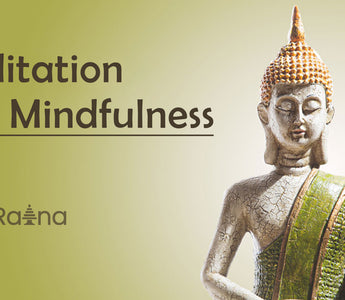Why do we practice Meditation & Mindfulness in Buddhism?
Meditation is a practice in which an individual uses a technique- such as mindfulness, or focusing the mind on a particular object, thought or activity; To train attention and awareness, and achieve a mentally clear and emotionally calm, and stable state. Meditation is practiced in numerous religious traditions.
What is Buddhist meditation?
When the Buddha taught that freedom from pain and confusion is possible and that this freedom gives rise to enduring well-being and happiness, he also mapped out the path that leads to this goal. Meditation is an integral part of this path, along with principled behavior.
In Buddhism the person meditating is not trying to get into a hypnotic state or contact angels or any other supernatural entity. Meditation involves the body and the mind. For Buddhists, this is particularly important as they want to avoid what they call 'duality' and so their way of meditating must involve the body and the mind as a single entity.
The Types of Buddhist Meditation
Meditation is essential in Buddhism. Therefore, in order to achieve enlightenment, one must know how to meditate properly.There are mainly two kinds of meditation:
-
Samatha meditation- This is known as calming meditation and Buddhists believe that it leads to deeper concentration. It is important as it allows them to let go of cravings and therefore, achieve Nirvana. It focuses on mindfulness of breathing.
- Vipassana meditation- This is known as insight meditation. When Buddhists meditate, they believe that they can see things as they really are. This allows them to gain realization and understand the impermanence of things and the nature of reality. It is not just about focusing on breathing - it is also about focusing on exploration. It can even be done when walking.
The Buddha practiced both forms of meditation. Buddhists imitate this method in order to achieve enlightenment. Both forms of meditation are important, and Buddhists take time to make sure their meditation is suited to their needs.
Other than these, Buddhists also practice these meditation techniques;
- Mindfulness meditation
- Visualization Practices
- Meditating on God
Meditation Posture And Preparation
Meditation postures are the body positions, the best known in Buddhist and Hindu traditions are the lotus positions. This involves sitting cross-legged with the left foot on top of the right thigh and the right foot on top of the left thigh. While it helps the body to be alert, relaxed, and stable, meditation is really about the mind and the inner experience.
It is useful to take time before and after you meditate to settle into and emerge from the practice. It is always a good idea to have some space to let thoughts die down and tune into your feelings and bodily sensations.
Best Meditation Tools to Improve Your Mindfulness Practice
| 1. | Incense |
| 2. | Singing Bowl |
| 3. | Meditation Altar |
| 4. | Prayer Wheels |
| 5. | Thangka Paintings |
| 6. | Mandalas |
| 7. | Zen spaces, gardens |
| 8. | Meditation Bells |
| 9. | Crystals |
How Does Meditation Practice Help?
Meditation helps an individual physically, emotionally, and mentally. The few benefits are:
- Find peace of mind
- Develop wisdom
- Accept thoughts, emotions, and sensations for what they really are
- Reduce stress and anxiety
- Worry less about the future
- Respond to situations based on reality, instead of worries
If you're confused, you can start with meditation techniques that help you build concentration. The purpose of meditation is a way of taking control of the mind so that it becomes peaceful and focused.
With meditation, you will gradually develop the ability to focus and be patient when your mind is not behaving the way you want. As you continue to practice, you will find that you can sit longer and pay attention without being distracted.















